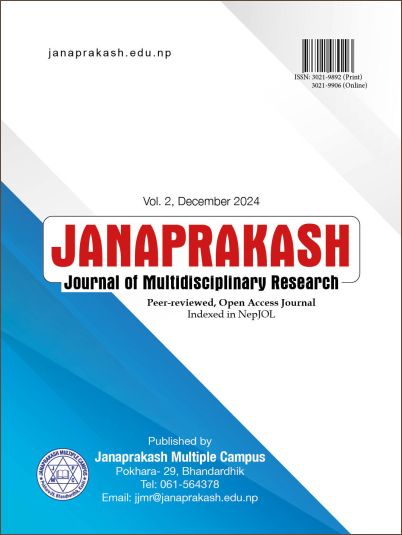Sentencing System in Nepal: Analysis of Theory, Legal and Institutional Mechanisms
DOI:
https://doi.org/10.3126/jjmr.v2i1.75176Keywords:
Sentencing, reformation, rehabilitation, re-socializationAbstract
Sentencing is the formal declaration of the judgment and the imposition of the punishment on behalf of the defendant soon after the finality of the conviction of the crime. If a defendant is convicted with the criminal offense by the court of law imprisonment, fine and compensation are imposed as a penalty on the defendant. Nepali legal system has adopted the reformative approach of sentencing i.e., criminals are subject to reformation. But the application of discretionary power of the judges for the imposition of the sentences by taking into the consideration of the mitigating and aggravating factors are not properly utilized for delivering the justice. Qualitative, doctrinal and descriptive research methodology is used in this study as well as content analysis as the tool of research method. The primary objective of this article tries to visualize sentencing philosophies adopted by Nepal, laws, judicial response and practice regarding sentencing and application of quantum of sentences in accordance with the gravity of the offences. Through this study the researchers draw the findings that, there is provision of punishing the poor criminals by the imposition of the imprisonment in case of failure to pay the fi ne and facility of the bail for the offender having the adequate economic resources are required to be eliminated. Finally, the results and findings of this study are important for future researchers, law practitioners, law students, law teachers, policy makers etc.
Downloads
Downloads
Published
How to Cite
Issue
Section
License
Copyright (c) 2024 The Author(s)

This work is licensed under a Creative Commons Attribution-NonCommercial 4.0 International License.
This license enables reusers to distribute, remix, adapt, and build upon the material in any medium or format, so long as attribution is given to the creator. The license allows for commercial use.




